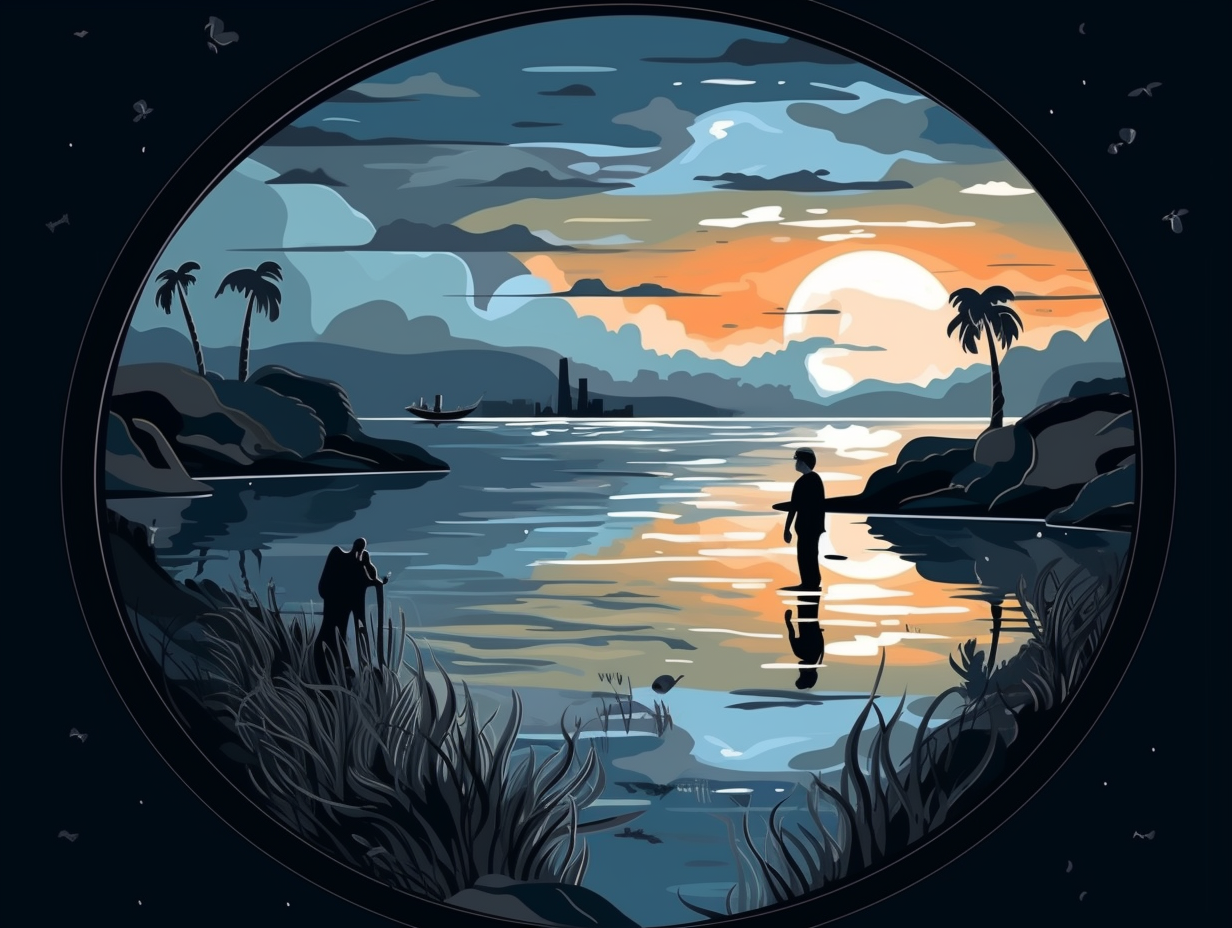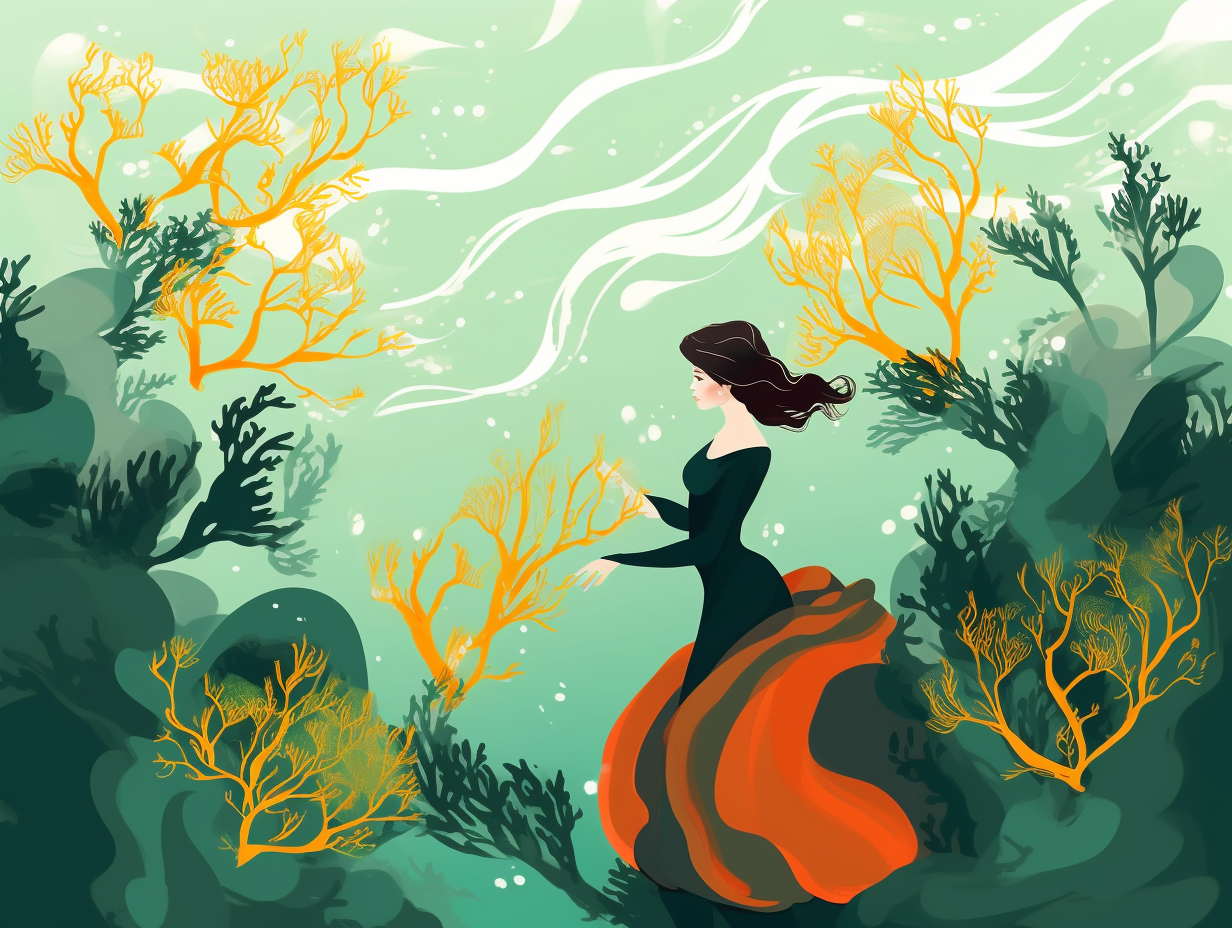Explore the Unknown: Top 8 Jaw-Dropping Fun Facts About the Twilight Zone Ocean

1. Party in the Twilight Zone
In the depths of the ocean, where the sun barely shines and the nightlife really glows, there exists a perpetual happy hour for fish and squids alike: The twilight zone ocean, or mesopelagic zone, is home to over 90% bioluminescent metazoan species, relying on their living light for communication, camouflage, and prey attraction. Adaptations like heightened visual acuity make it possible for these creatures to navigate and hunt, resulting in an underwater hotspot with an estimated biomass of at least 1000 million tonnes – talk about a lively ecosystem!
Source => sciencedirect.com
2. Bristlemouth Fish: Cheshire Cat's Cousins
Brace yourselves, fish fans: an undersea society teeming with the Cheshire Cat's aquatic, elusive cousins is thriving outside of Wonderland's reach! Behold, the bristlemouth fish: these small and oh-so-discreet dwellers of the twilight zone ocean are estimated to be in the quadrillions, making them the most abundant vertebrate on earth as per the wise aquatic gurus at the Woods Hole Oceanographic Institution.
Source => cnn.com

Dive into the depths of the Mariana Trench and discover the incredible pressure that awaits you, equivalent to having five jumbo jets stacked on top of you! Uncover more mind-blowing ocean facts 🌊
=> Fun Facts about The-Ocean
3. Lights for Shy Sea Creatures
Lights, camera, aquatic action — but not too much light, please: Scientists are developing innovative LED lighting solutions to study the ocean twilight zone's light-sensitive creatures, using warm white and deep red LED arrays to balance exceptional imagery without startling or disrupting their natural habitats.
Source => phys.org
4. Climate Hero: Marine Snow
Hold onto your umbrellas, folks, because it's raining marine snow in the twilight zone of the ocean! But this isn't just any old precipitation: marine snow actually helps regulate Earth's climate by absorbing huge amounts of carbon dioxide, keeping it out of the atmosphere for centuries, and has even contributed to cooling down our planet over the last 50 million years. Talk about a flaky hero!
Source => ocean-based.com

5. Ctenophores: Ocean's Popcorn Lovers
In a surprising twist even Rod Serling would appreciate, the Twilight Zone of the deep sea features a cast of ctenophores, starring as the one-devours-all gelatinous creatures with a hankering for the ocean's version of popcorn: copepods! The serious reveal: These ctenophores help regulate marine ecosystems by gorging on copepods that prey on phytoplankton, which grow on the ocean surface and provide sustenance for fish, jellyfish, and leatherback sea turtles, while also facilitating carbon transport throughout the watery depths.
Source => twilightzone.whoi.edu
6. Cockeyed Squid's Funhouse Gaze
Squid's the name, funhouse eyes are the game: The cockeyed squid of the twilight zone ocean boasts one eye larger than the other to aptly detect sunlight and bioluminescence, with the big eye reeling in the dim glow of the sun and the little one serving as a hype man for those electric-blue deep-sea flashes.
Source => today.duke.edu
7. The Ocean's Exclusive Party
Imagine if you threw a party and everyone in the ocean showed up, but the party was only on the guest list of the cool kids, a.k.a. the "Twilight Zone": Behold this fascinating revelation: The biomass of fish in the ocean twilight zone may be ten times greater than previously thought, making it potentially one of the richest fishing grounds on the planet. However, scientists warn that we need to learn more about the twilight zone's important ecosystem services before commercial fishing operations begin, as they may have unknown consequences for marine ecosystems and Earth's climate.
Source => whoi.edu
8. Deep-Sea Anglerfish Love Life
Move over, Edward and Bella – there's a new power couple in town, and they put a whole new spin on "until death do us part": The deep-sea anglerfish is a fascinating creature living in the twilight zone ocean, where the female uses a bioluminescent lure to attract prey in an eternal night. The much smaller male anglerfish attaches to the female, fusing with her skin and sharing her blood supply, ensuring the survival of their species in the extreme conditions of the deep sea with this unconventional reproductive strategy.
Source => eat.blue
Related Fun Facts




















